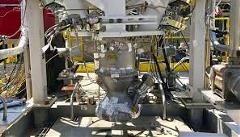Additive Manufacturing: Structural and Material Optimization

Synopsis
The use of 3D printing, also known as Additive Manufacturing (AM), has moved well beyond prototyping, rapid tooling and toys; it is considered a production tool. As these advanced manufacturing techniques enable complex and revolutionizing structures and material with intricate details that were not possible before, topology optimization is considered the ideal design method to produce such innovative and unintuitive designs for AM.
This course will provide a practical understanding of topology optimization and additive manufacturing. It will uncover the numerical machineries of a range of topology optimization methods and reveal how to formulate design problems and select numerical parameters to yield successful designs. It will also discuss the state-of-the-art topology optimization capabilities in the context of material and structural designs under multiphysics. The course will also offer an overview of rapidly developing additive manufacturing technologies, including those commercially available as well as the state-of-the-art methods for the future. It will discuss the material types and capabilities for each method and the associated considerations for design, both at material and structural scales. The course will also include a practical hands-on element using an open source topology optimization code.
Learning Objectives
- To gain a practical understanding of topology optimization methods (both SIMP and level set topology optimization) and the numerical parameters.
- To use topology optimization for design of structures and/or architected material.
- To evaluate additive manufacturing methods suitable for a given design problem.
- To design an architected material or structure for a chosen additive manufacturing technique.
- To discuss the state-of-the-art additive manufacturing and design optimization techniques hence steer and shape future development strategies.
- See below for detailed outline.
Who Should Attend
The target audience includes managers who wish to gain an understanding of topology optimization and additive manufacturing capabilities for the future, practitioners of architected material design, design for additive manufacturing and topology optimization as well as researchers interested in employing topology optimization and additive manufacturing in their research (e.g. graduate students, postdocs and academics). The fundamental concepts in digitally linking manufacturing to design via optimization and design for uncertainty material properties arising from manufacturing and integrating multiple scale in design of structural-material systems would also interest systems engineers, ICME (integrated computational material engineering,) and digital engineering practitioners.
Course InformationType of Course: Instructor-Led Short Course
Course Length: 1 day
AIAA CEU's available: Yes
Outline
1. Introduction to topology optimization
1.1 Mathematical programming
1.2 SIMP method
1.3 Level set method
2. Overview of additive manufacturing
2.1 Classes of additive manufacturing methods available today
2.2 State of the art additive manufacturing methods
3. Application of additive manufacturing - material and structural scale
3.1 Case studies of applications
3.2 Pre-processing for additive manufacturing
3.3 Design considerations for additive manufacturing
4. Application of topology optimization
4.1 Structural mechanics design
4.2 Design for multiphysics multidisciplinary design
4.3 Multiscale optimization for structural-material systems
4.4 Challenges and limitations of applying topology optimization
5. Hands-on demonstration with an open source topology optimization software
An open source topology optimization code is available at http://m2do.ucsd.edu/software/
H Alicia Kim, Ph.D. is Jacobs Scholars Chair Professor at the University of California San Diego and Director of Multiscale and Multiphysics Design Optimization (M2DO) Lab. Professor Kim has over 20 years of research experience in the fields of topology optimization, multiscale and multiphysics design optimization, composite and smart materials, which have been published in over 200 publications. Her pioneering research has been recognized by awards from AIAA and ISSMO (International Society of Structural and Multidisciplinary Optimization) and a prestigious fellowship from the UK Engineering and Physical Sciences Research Council. She received her Ph.D. in topology optimization from the University of Sydney, Australia and began her academic appointment at the University of Bath, UK for 15 years before moving to the current position in the US in 2015.
Christopher M. Spadaccini, Ph.D., is currently the Materials Engineering Division Leader in the Engineering Directorate at Lawrence Livermore National Laboratory. He has been working in advanced additive manufacturing process development and architected materials for over 13 years and has over 65 peer-reviewed journal publications, 4 book chapters, more than 100 invited presentations, and over 40 patents awarded or pending. Spadaccini founded several new fabrication laboratories at LLNL for process development focused on micro and nano-scale features and mixed material printing, as well as scale-up for higher throughput. He was the founding Director of the Center for Engineered Materials and Manufacturing prior to becoming a division leader and co-led efforts to establish the Advanced Manufacturing Laboratory at LLNL. He has been a member of the LLNL technical staff for 17 years and received the B.S., M.S., and Ph.D. degrees from the Department of Aeronautics and Astronautics at MIT. He is currently also an adjunct faculty member at the University of California, Davis, in the Chemical Engineering Department.
AIAA Training Links
For information, group discounts,
and private course pricing, contact:
Lisa Le, Education Specialist (lisal@aiaa.org)
